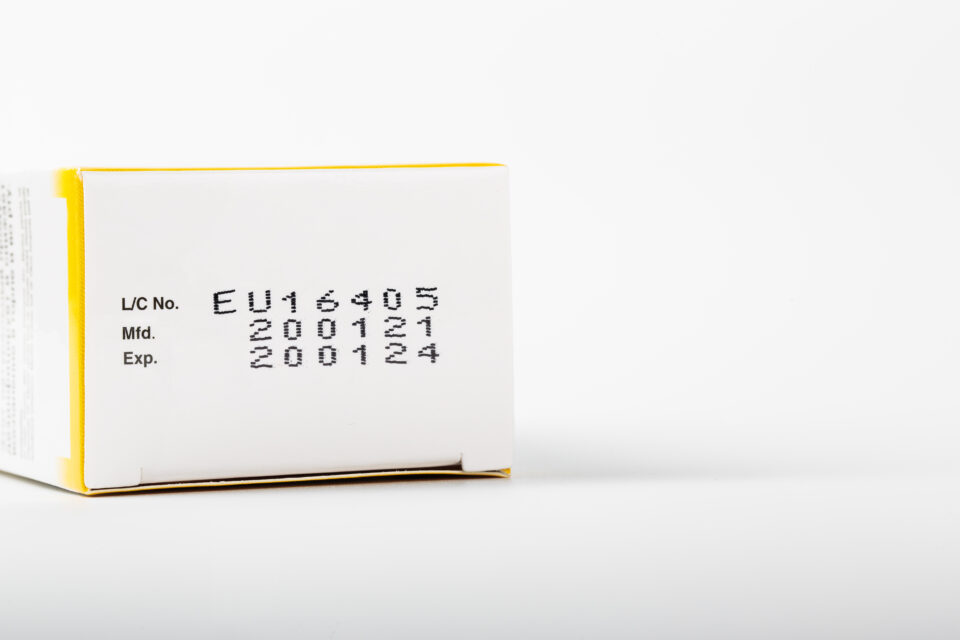EU Guide: What are Legacy Devices?

UK updates post-Brexit medical device guidance
January 4, 2022
EU Steps to Market
January 6, 2022Page Last Reviewed: 2 January 2024
At a high level, legacy devices are those that had valid CE marking under the old European Directives (MDD/AIMDD/IVDD) on the day that the MDR and IVDR went into effect. Legacy devices were given a transition period to fully comply with the MDR/IVDR and are legally allowed to be marketed after the MDR/IVDR’s dates of application.
Please read below for more details.
What are Legacy Medical Devices?
Medical Device legacy devices are:
- Devices that had a valid MDD/AIMDD CE Marking certificate on 26 May 2021, that did not expire before 20 March 2023, and were not withdrawn by the Notified Body.
- Devices that had a valid MDD/AIMDD CE Marking certificate on 26 May 2021 but expired prior to 20 March 2023, if the following conditions are met:
- it was not withdrawn by the Notified Body; and
- before the CE certificate expired the manufacturer either had a signed written agreement in place with the Notified Body or had been granted an Article 59(1) derogation or Article 97(1) authorization by an EU Competent Authority.
- Devices that were Class I self-certified under the MDD, but were up-classed under the MDR, and for which a Declaration of Conformity was lawfully drawn up prior to 26 May 2021.
MDR Transition Compliance Dates
The MDR transition period was originally set to end 26 May 2024. However, on 20 March 2023, the MDR’s transitional provisions were extended. Per Regulation 2023/607, the new MDR transition deadlines are:
- 31 December 2027- Class IIb implantable and Class III devices*
- 31 December 2028 – Class IIb (all other), Class IIa, Class I sterile/measuring and Class I self-certified devices
*The following devices are excluded and are eligible for the 31 December 2028 deadline: sutures, staples, dental fillings, dental braces, tooth crowns, screws, wedges, plates, wires, pins, clips and connectors
NOTE: Custom-made Devices
Class III implantable custom-made devices have been granted a further transition period to obtain conformity assessment certification from a Notified Body. These products may be lawfully placed onto the market without a conformity assessment certificate until 26 May 2026, provided that they: 1) lodged a formal application with a notified body no later than 26 May 2024 and 2) have signed a written agreement with a Notified Body no later than 26 September 2024.

What are Legacy IVD Devices?
IVD legacy devices are:
- IVDD 98/79/EC devices with valid Notified Body issued IVDD CE Marking certificates
- IVDD 98/79/EC self-certified devices, which had IVDD CE marking before the IVDR’s date of application, and were up-classed under the IVDR and therefore no longer self-certified under the IVDR
IVDR Transition Compliance Dates
IVD legacy devices may continue to be placed onto the European Single Market after the IVDR’s date of application (26 May 2022), through the following dates:
- Class A sterile – compliance date of 26 May 2027
- Class B – compliance date of 26 May 2027
- Class C – compliance date of 26 May 2026
- Class D – compliance date of 26 May 2025
- IVDs with Notified Body issued IVDD CE Marking certificates – 26 May 2025
IVDR, Article 110 (2 and 3) outlines which devices are eligible for the transition period.
Conditions/Deadlines for Legacy Devices
The device must have already had MDD/AIMDD/IVDD CE Marking on the MDR/IVDR’s date of application to be considered a legacy device.
Where a manufacturer places a new device onto the market, i.e., one that did not yet have CE Marking by the MDR/IVDR date of application, then that device is not eligible for this transition period allowance. Meaning:
- Any medical device newly CE marked after 26 May 2021, must be CE marked to the MDR.
- Any IVD newly CE marked after 26 May 2022, must be CE marked to the IVDR.
Conditions: Legacy Medical Devices and IVDs
The following conditions apply to all legacy devices (Notified Body CE Marked and Self-Declared):
- The device must continue to comply with the MDD/IVDD
- A valid Declaration of Conformity must be:
- Drawn up (and signed) prior to 26 May 2021 (medical devices) / 26 May 2022 (IVDs)
- No significant changes to the design or intended purpose of the device can occur after 26 May 2021 (medical devices) / 26 May 2022 (IVDs)
- Manufacturer must comply with the MDR/IVDR for the following, irrespective of having MDD/IVDD CE Marking:
- Post-market surveillance
- Market surveillance
- Vigilance
- Registration of economic operators and of devices
Deadlines: Legacy Medical Devices
The following deadlines must be met by all legacy medical devices (Notified Body CE Marked and Self-Declared):
- Manufacturers must put in place a quality management system in accordance with MDR Article 10(9) no later than 26 May 2024
- Manufacturers must have lodged an application with a Notified Body for that device no later than 26 May 2024
- Manufacturers must have a signed agreement in place with a Notified Body for that device no later than 26 September 2024
If a product does not meet the above conditions, then it ceases to be a legacy device.
Which Sections of the MDR and IVDR Apply to Legacy Devices?
MDR/IVDR sections related to post-market surveillance, market surveillance, vigilance and registration of economic operators and devices apply to all legacy devices. As well, the quality system requirements will become applicable for MDD/AIMDD devices starting 26 May 2024.
The MDCG has published guidance to help clarify the requirements: MDCG 2021-25 for medical devices and MDCG 2022-8 for IVDs.
The following are examples extracted from the MDCG annexes and Regulation 2023/607, which amends the transitional provision of the MDR.
| MDR/IVDR Section | Applicable: YES/NO |
|---|---|
| MDR Art. 10(10), (12)-(15)/IVDR Art. 10(9), (11)-(14) – General obligations of manufacturers, specifically the sections related to post-market surveillance, market surveillance, vigilance and registration of economic operators and devices | MDR – “YES (nota bene: ‘conformity with the requirements of this Regulation’ shall mean for ‘legacy devices’ conformity with the MDD or AIMDD and the additional requirements in accordance with Article 120(3) MDR)” IVDR – “YES (nota bene: ‘conformity with the requirements of this Regulation’ for ‘IVD legacy devices’ means conformity with the IVDD and the additional requirements in accordance with Article 110(3) IVDR)” |
| MDR Art. 10(9) on quality system requirements | “YES” – Per EU Regulation 2023/607, which amends the MDR’s transitional provisions, medical device manufacturers must implement a quality management system as outlined in MDR Article 10(9) no later than 26 May 2024 |
| MDR/IVDR Art. 13(2) 2nd subparagraph, (4), (6)-(8), (10)- General obligations of importers, specifically the sections related to post-market surveillance, market surveillance, vigilance and registration of economic operators and devices | MDR – “YES (nota bene: ‘conformity with the requirements of this Regulation’ shall mean for ‘legacy devices’ conformity with the MDD or AIMDD and the additional requirements in accordance with Article 120(3) MDR)” IVDR – “YES (nota bene: ‘conformity with the requirements of this Regulation’ for ‘IVD legacy devices’ means conformity with the IVDD and the additional requirements in accordance with Article 110(3) IVDR)” |
| MDR/IVDR Art. 15 – Person Responsible for Regulatory Compliance | “NO” |
| MDR Art. 27/IVDR Art. 24 – Unique Device Identification (UDI) system | Device Identification (UDI) system “NO (See in this respect also MDCG 2019-5 on registration of legacy devices in Eudamed)” |
| MDR Art. 32/IVDR Art. 29 – Summary of safety and clinical performance/Summary of safety and performance | “NO” |
| MDR Art. 85/IVDR Art. 80 – Post-market surveillance (PMS) report | MDR – “YES (classification of devices in class I follows classification rules of the MDD, i.e. Art. 85 applies to class I ‘legacy devices’ despite the fact that those devices might be in a higher class under the MDR)” IVDR – “YES, applicable to all ‘legacy devices’, unless manufacturer voluntarily prepares a PSUR pursuant to Article 81” |
What is Considered a ‘Significant’ Change?
The Medical Device Coordination Group (MDCG) has released guidance documents related to ‘significant’ changes for legacy devices.
MDD/AIMDD Legacy Devices – MDCG 2020-3 provides feedback such as: “administrative changes of organisations are considered in principle as nonsignificant. This includes changes of the manufacturer’s name, address or legal form (legal entity remains) or changes of the authorised representative.”
It additionally provides a series of flowcharts to help manufacturers assess if a change may be considered significant, thereby requiring MDR CE Marking in order to be marketed with this change.
IVDD Legacy Devices – MDCG 2022-6
Like the guidance for medical devices, the IVD legacy guidance document provides feedback and flowcharts of what may be considered a significant change.

Legacy Device Change Assessment Tool
Confirm if your MDD/AIMDD/IVDD device change is non-significant, allowing it to maintain its legacy status. Or, if the change is significant and requires MDR/IVDR CE Marking.


